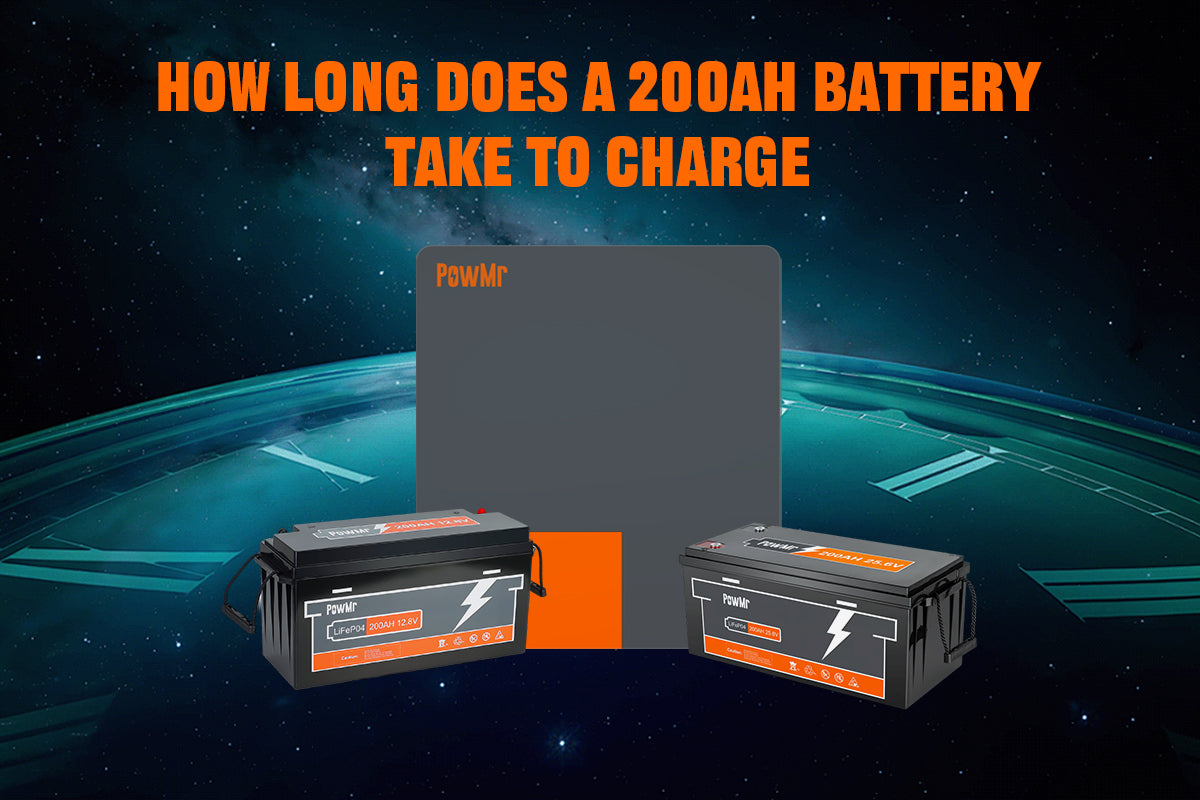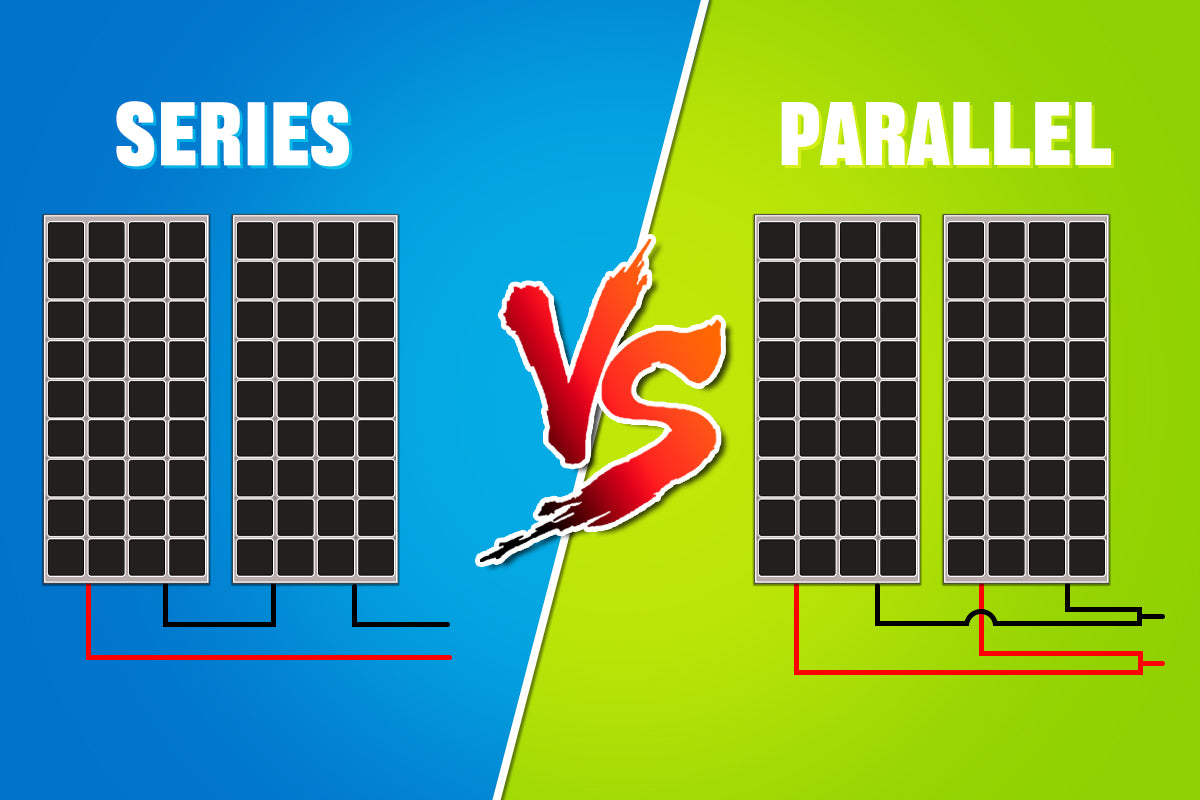Calculating the charging time and the running time of a 200Ah battery are essential for anyone relying on stored energy, whether you're living off-grid in an RV, running a backup system for your home, or managing energy usage to cut electricity bills. Calculating charging time helps you plan your activities, avoid overcharging, and optimize energy consumption for better performance and longer battery life.
The charging time depends on battery capacity, charging current, and efficiency losses. In this article, we’ll explain how to calculate the charging time for a 200Ah battery using simple formulas and real-world examples.
How to calculate how long does it take to charge a 200ah battery
Below, we’ll walk through the two most common methods for calculating battery charging time: one based on solar panel wattage and the other based on charging current.
Calculate with solar panel wattage
This method is commonly used in solar power systems. It's simple and provides a quick estimate of the minimum peak sunlight hours needed to fully charge a 200Ah battery in one day. because only under the ideal solar condition, the solar panel can genrate electricity at full rated.
Charging Time (in hour)= Battery Capacity(Ah)*Battery Voltage(V)/ Solar Panel Wattage(W)
If you're using a 300W solar panel with a 12V 200Ah battery, divide 300W by 12V to get 25A. Then, with a 25A charge controller, the battery would theoretically take 8 hours to charge. In reality, with losses and variable sunlight, it may take 9–10 hours to fully charge.
You can use a 35a mppt charge controller to reduce charging time of the 200ah battery to 6 hours.
However, it’s less accurate due to variations in sunlight and, solar controller type, panel orientation, and weather conditions.
Note:
As seen in the example above, charging a 200Ah battery with a 300W panel takes longer than a single day under typical conditions. Since most areas receive only 4 to 5 hours of peak sunlight per day, it's more practical to start with how much current you need to properly charge the battery within that timeframe.
We recommend sizing the solar charge controller first by working out the minimum current needed to recharge the battery during the available sun hours. Then you can oversize your solar array slightly to ensure stable performance even under less-than-ideal conditions. It's important to keep the actual charging current within the battery's maximum rated input.
Calculate with charging current
Once you determine the size of charger, you can estimate the charging time, simply divide the battery's amp-hour capacity by the charging current. This method works regardless of whether you're charging with solar charge controller, an AC charger, or another DC source.
Charging Time in hour = Battery Capacity(Ah) / Charging Current (A)
For example, if you're using a 40A mppt charge controller, then dividing 200Ah of battery capacity by 40A of charging current gives you 5 hours of charging time under optimal conditions.
Factors affecting battery charging time
To more accurately estimate the charging time of a 200Ah battery, many factors still need to be taken into consideration. Below are some of the most influential factors affecting how long a 200Ah battery takes to charge.
Charging current
As mentioned earlier, you can use different sizes of battery chargers, as long as the charging current stays within the battery’s maximum charging current or recommended C-rate. The C-rate measures how quickly a battery charges or discharges relative to its capacity.
For example, a 200Ah battery with a 1C rate has a maximum charging current of 200A, meaning it can theoretically charge fully in 1 hour.
A 200Ah battery with a 0.75C rate has a maximum charging current of 150A, taking approximately 1.33 hours to charge under ideal conditions.
Depth of discharge
Estimating battery charging time with Depth of Discharge (DoD) is practical in everyday use. That’s because different battery types have different recommended discharge limits, and users typically recharge their batteries only after reaching a certain DoD to extend battery lifespan. DoD directly reflects how much charge needs to be restored, making it a realistic basis for estimating charging time.
Charging Time = Battery capacity * DoD / Charging Current
Generally, a lead-acid battery should be recharged when it reaches around 50% DoD, while a lithium battery can safely discharge to 80–100% before needing to be charged again.
For instance, a 200Ah lead-acid battery discharged to 50% needs to replenish 100Ah, which takes about 3.3 hours with a 30A charger. A 200Ah lithium battery discharged to 80% requires 160Ah to recharge, taking roughly 5.3 hours at the same rate.
Charger efficiency
Solar charger performance varies significantly based on build quality and underlying technology. The efficiency rating quantifies energy losses during DC conversion, with higher efficiency directly translating to faster charging.
When it comes to solar charging, MPPT charge controllers are significantly more efficient than PWM types, often converting 20–30% more power from your solar panels into usable battery energy. This means faster charging and better performance, especially in variable weather conditions.
Battery chemistry
Different battery types have different charging efficiencies, which directly affect how long it takes to fully recharge them. Lead-acid batteries, for example, typically have an efficiency of around 80–85%, meaning more energy is needed to restore the same amount of capacity due to internal resistance and heat loss. In contrast, lithium batteries, such as LiFePO₄, have much higher efficiency, often above 95%, allowing for faster and more energy-efficient charging.
State of charge
Charging time depends on the battery’s current state of charge (SoC)—that is, how full the battery is before you start recharging. The lower the SoC, the more energy is needed to restore it to full capacity, and the longer the charging process will take.
For example, a 40A charger takes 4 hours to charge a 200Ah battery from 0% to 80%. On the other hand, if the battery is already at 20% state of charge (SoC), you only need 3 hours to replenish the remaining 60% of its capacity.



